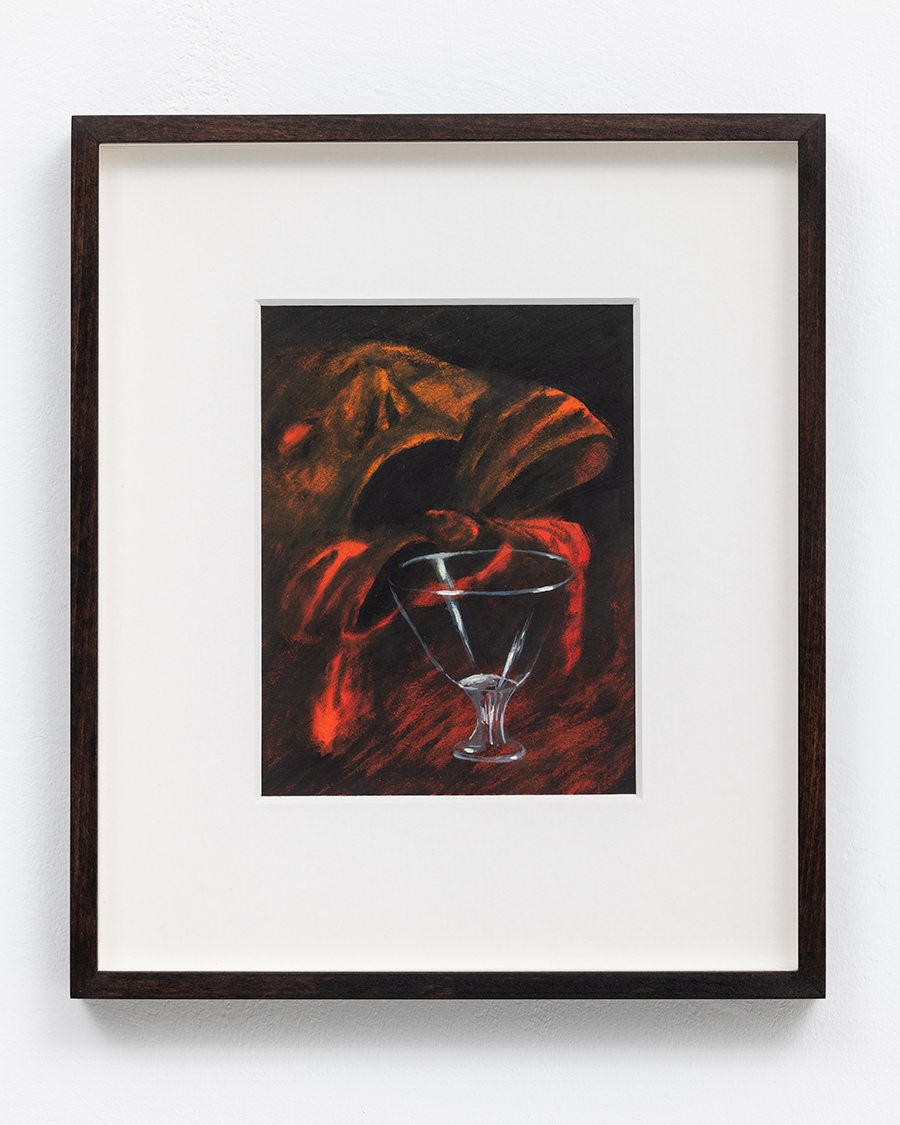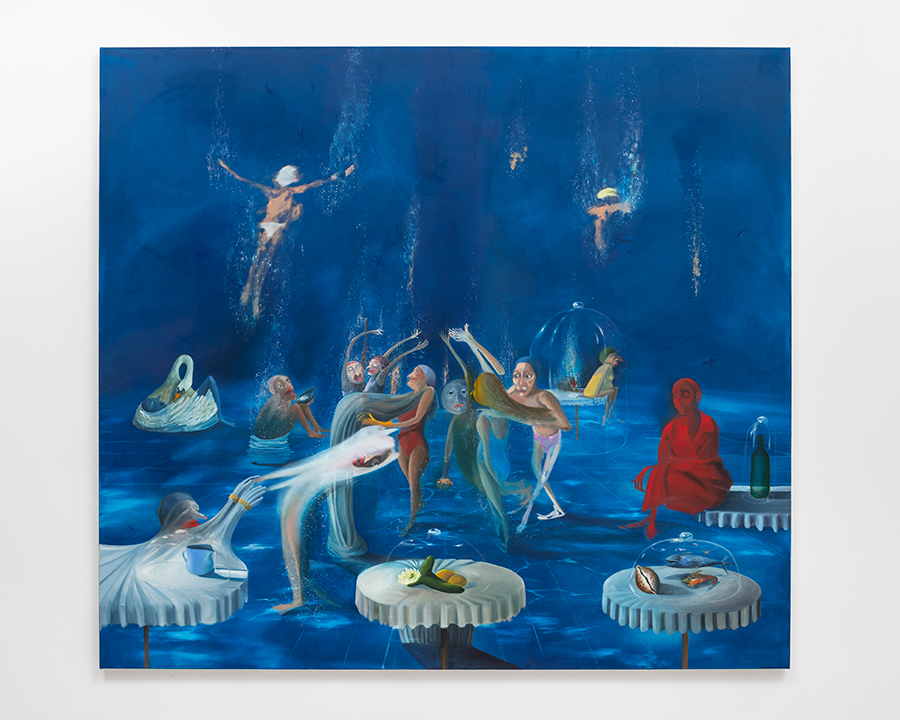Underwater
Your work ‘Blue Jug’ is one of the first paintings I saw in person when slowly emerging from lock down. It was mesmerizing and seemed to capture to current mood. By gazing at this work, I felt as if I could walk into an underwater world; the murky light and suffocating depth so deftly suggested in paint. How did you go about developing this piece?
When the public swimming pools eventually opened up in between the various lockdowns I started swimming a lot. Suddenly, I was back in a sort of social space, moving with/dodging other people. In previous paintings I’d explored lots of populated spaces; restaurants, parties, beaches. With lockdown all those spaces disappeared. Swimming had become this new space for me to navigate my desires and feelings within. With my goggles on I’d go swimming most mornings and quickly the underwater scene that is played out in ‘Blue Jug’ appeared in my mind. I became obsessed with it. I felt particularly lucky if it was a sunny morning as the shards of light would bounce down to the bottom of the pool. I don’t think there’s anything more beautiful and other-worldly. Swimming to the bottom of the pool became a beautiful refuge for me.
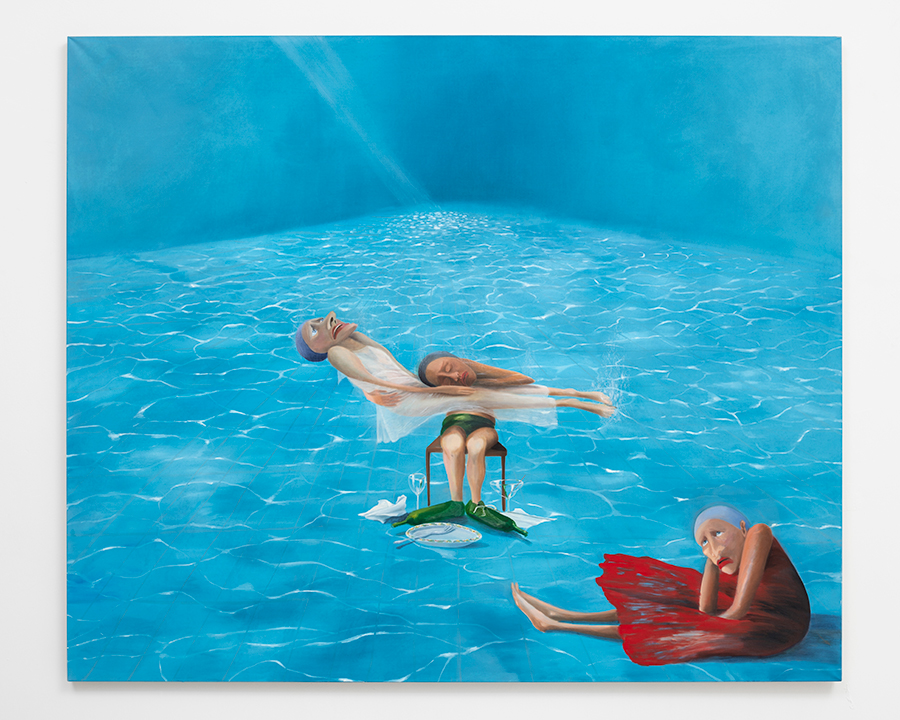
Mary Stephenson, 'Untitled', 2020, oil on linen, 180 x 150 cm.
Not Waving but Drowning
The watery setting of this painting calls to mind a poem by Stevie Smith. The last two lines are ‘I was much too far out all my life / And not waving but drowning’. The lonely drinkers, ghosts and mask like frowns add to a sense of isolation or melancholy; of being present but somehow apart. Do you intend for the painting to be read in this way? Do you strive for your works to be emotionally affecting?
It’s always so amazing the hear the way the paintings make someone feel. They definitely effect me. A lot of the time the paintings portray overlapping emotions, conflicting moments, juxtaposing moods, all in one ‘scene’. I want to depict those feelings that cannot be put down to one named emotion but instead show the mania of one’s internal thoughts and feelings that accumulate to something undefinable. In the paintings I desire to hit the axis of something being both funny, hilarious, joyful and yet sad, devastating and melancholy.
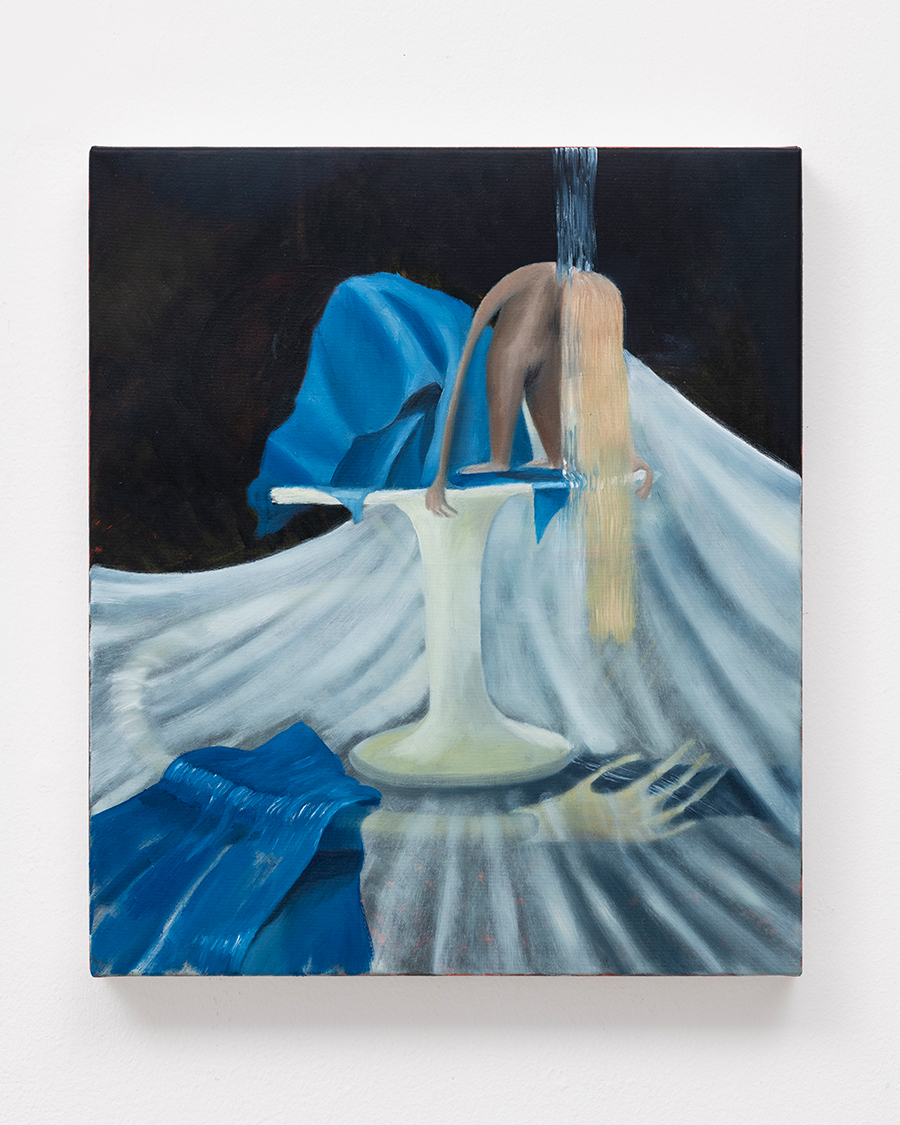
Mary Stephenson, 'Long Hair', 2021, oil on linen, 30 x 35 cm.
The Cook, the Thief, His Wife & Her Lover
What is the significance of the dinner table within your works?
When I moved to Madrid and then Lisbon nearly four years ago I was surrounded by so much food and culture. The dining table became the stage in which I explored so many new realms of seeing the world. Being lonely in a new space and discovering new parts of my personality with strangers over a meal. I’m interested in exploring how we consume things in order to build up a desired exterior self to portray ourselves to others. Food is so evocative, I find it slips into a lot of my paintings when I’m exploring emotions for that simple reason.
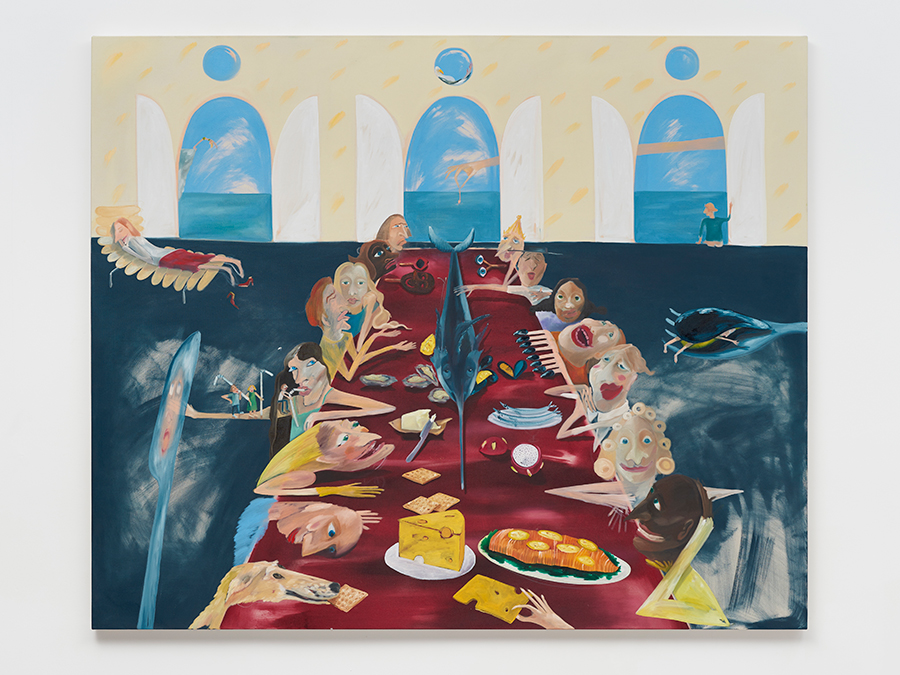
Mary Stephenson, 'Shellfish', 2019, oil on canvas, 180 x 150 cm.
Public and Private
Following on from this, can you tell me more about the depiction of public and private spaces in your paintings? There seems to be a real tension between sites of public display (where we must entertain others or parade our best manners) and the sanctuary of the bed, for example. As an artist why are you drawn to these places?
Exploring the shift between our internal unconscious minds and our woken conscious worlds is what I aim to explore in my work. Whether it’s the heady frantic spaces of populated restaurants or the solo refuge of a quiet bed, the internal and external are always pulling us back and forth between the two. I want to depict that shift and conflict and discover what’s lost and gained in between.
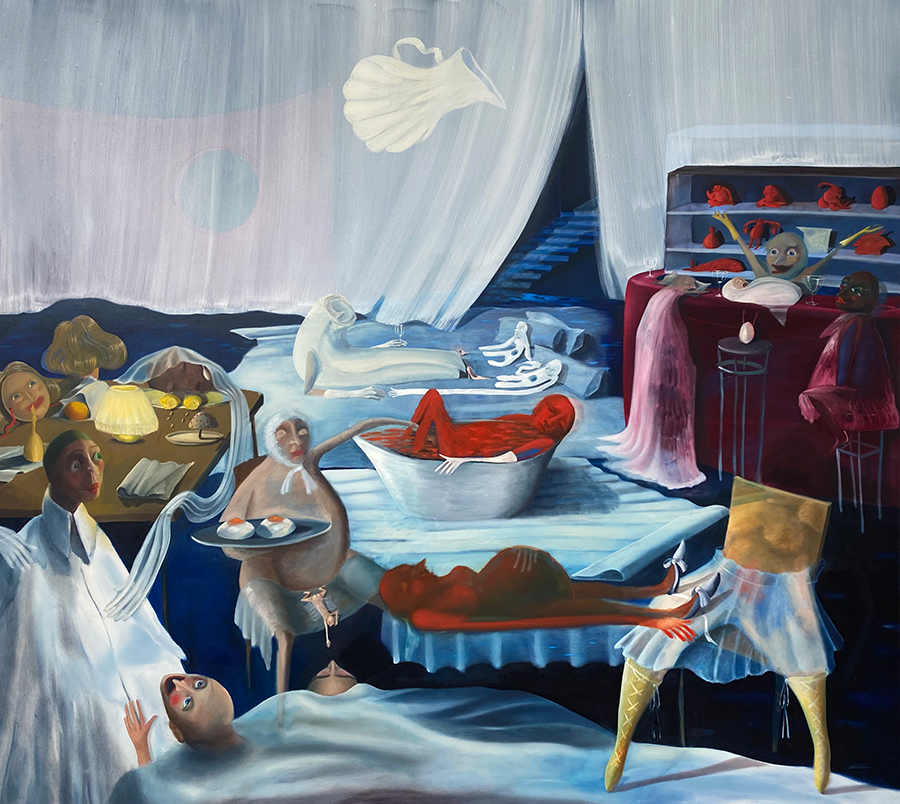
Mary Stephenson, 'Small Buckets', 2021, oil on canvas, 200 x 180 cm.
My Man
Your photographic series ‘My Man’ is an instance when private spaces become public and intimacy is performed or ‘rehearsed’. Subjectively speaking, I connect with the optimism of daydreaming about coupled bliss whilst feeling the anxiety of a fantasy foisted upon us by others (family, friends, films). Can you tell me more about the idea of performance or role-play your works?
I personally find it impossible to go through a day without projecting onto the near or distant future multiple times! I am so overwhelmed by aspirational ideas, whether it’s the “Tired of Being Tired” woman on the tube or just looking at someone else’s food order from a far at a restaurant. I have a vivid imagination and can turn most small things into a tale or film scene where me and the people around me are the leading roles. I think playing out ideas in one’s head is a natural thing, whether it’s the ruminating thoughts of an anxious moment or a happy time that becomes frozen perfectly in our mind. We learn from a young age to play out roles we’re intrigued by - it makes us feel safer about going out into the “real world”. Painting is the perfect place for role-play and to conjure up the things we want to discuss externally but don’t have the means or words to do so. I find painting the most surprising and cathartic process.
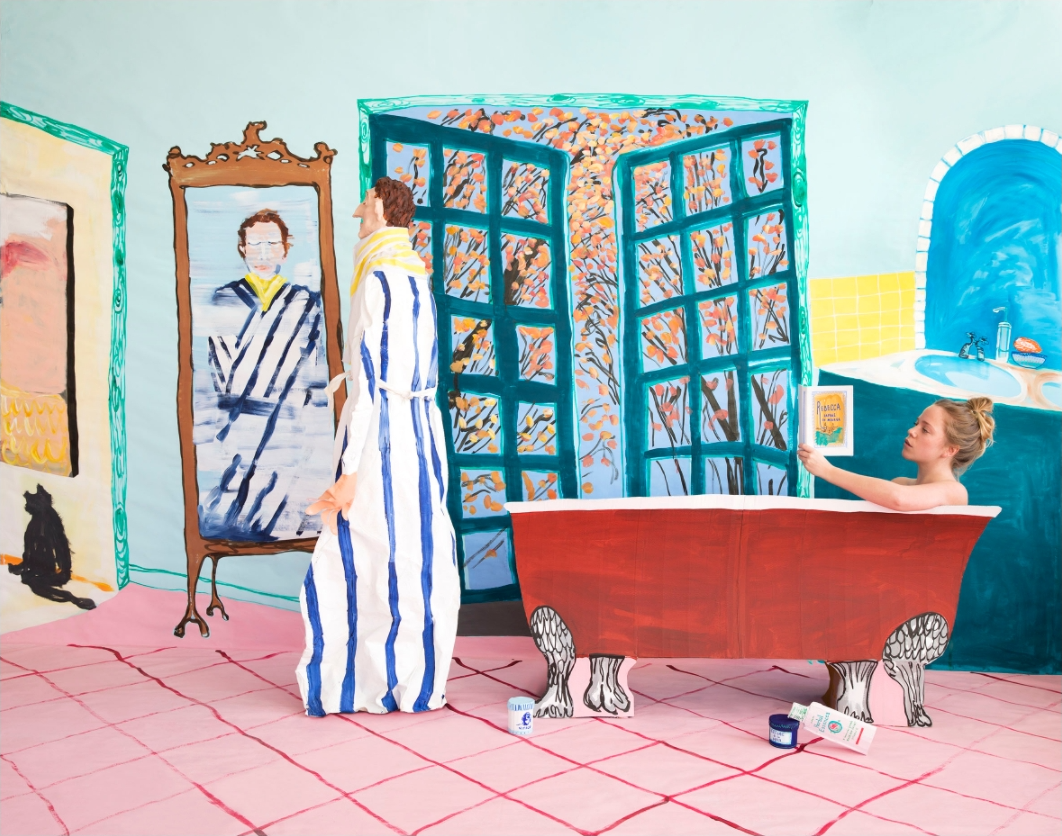
Mary Stephenson, 'My Man', 2017, giclee print, 100 x 78 cm.
Foil Swan
Certain objects recur throughout your works as if on loan from your personal symbolic archive, most prominently swans, noses, slices of cake. Can you tell me a little about the significance of these objects or why they reappear?
Objects are a solid thing. They become the props, the stand in, for us to display nuanced aspects of ourselves - we can use them to nod to others our interests, feelings and desires but from a safe, neutral space. We can hide behind them.
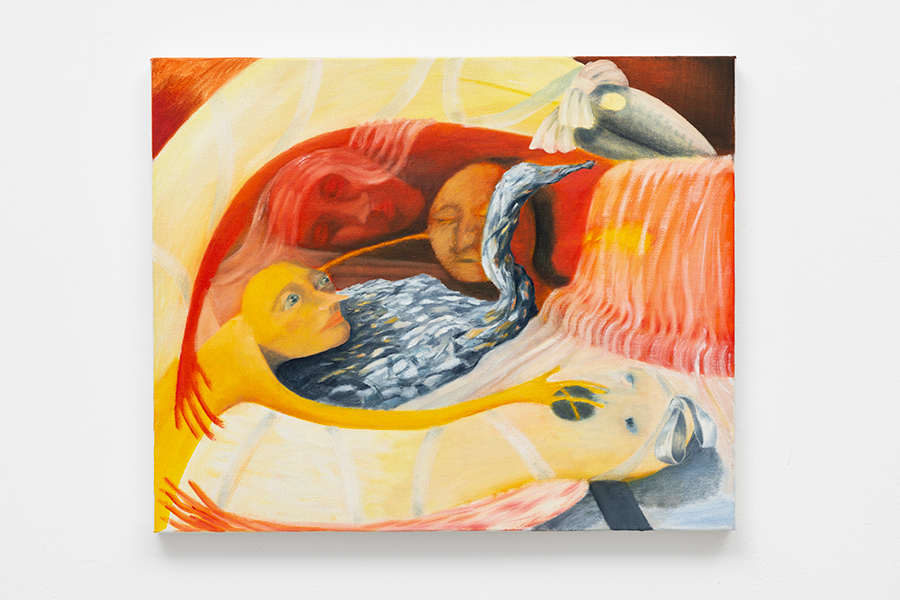
Mary Stephenson, 'Foil Swan', 2021, oil on canvas, 45 x 55 cm.
White Linen
Ephemerality and materiality intertwine in your recent paintings as you use paint to suggest objects that are barely there. Are these qualities that you think about when painting and why are you drawn to the swooshing of sheets and the surface of glass?
I find these moments of ghostly paint in my work happen by chance. Wiping something away to find a new translucency that I didn’t plan on is really exciting. The more mistakes I make when I paint the more they develop. Thematically, the more I’ve developed a practice focusing on exploring the unconscious mind, these sheer translucent films have appeared more and more. I think it speaks to trying to get through an avenue, to explore new unknown spaces.
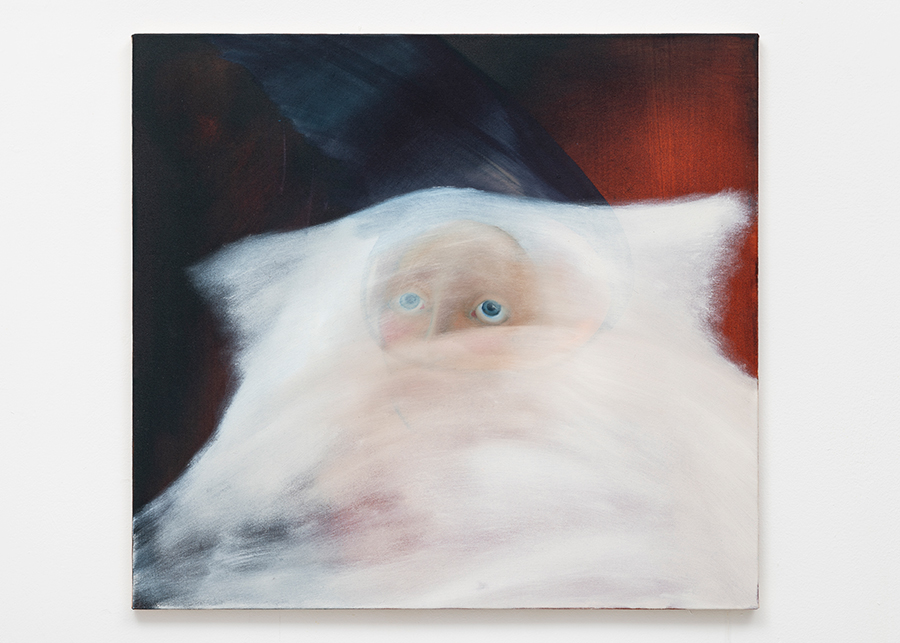
Mary Stephenson, 'White Linens II, 2020, oil on canvas, 66 x 61 cm.
Be our guest!
Your world is full of anthropomorphism. Wine glasses frown. Figures, objects and spectres merge. When did this start to happen within your work? Do you begin from fiction or dreams, or use automatic drawing as way to conjure these creatures?
These anthropomorphic objects have always appeared in my mind, ever since I was a child. I have always projected a lot onto objects, giving them feels and narratives - in a playful and bizarre way I think they become comrades and external characters that play out my feelings for me.
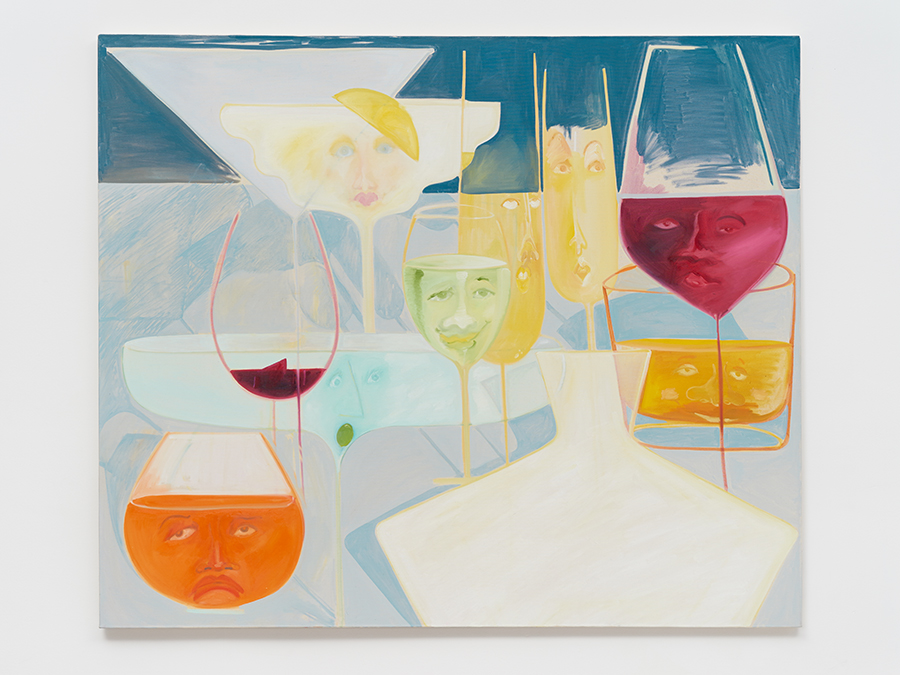
Mary Stephenson, 'It Was The Wine Talking', 2018, oil on canvas, 130 x 110 cm.
Tableaux
Your early works are photographic tableaux of people posing in painted sets. Of these you have said ‘My sculptural portraits embrace a playful desire to get inside the staging of paintings, enacting a childhood fantasy of mine to inhabit my favourite works of art.’ Stating that ‘I’ve always painted but came to a point where the dimension of my work felt limited’. Whilst being very different there are striking connections between those early photographic tableaux and your large-scale narrative paintings. What drew you back to painting after feeling that it was limited? What do you take from that period and what has shifted in your approach?
I started painting again when I was in Madrid. I found making the photographic portraits became a very controlled process for me. There were practical factors that somewhat limited how much I could push the work. With painting I was able to push my imagination with the scale, the narrative, the depiction of a material, to as far as I possibly wanted and money, space, time never became a problematic factor in pushing the images out that I had in my head.
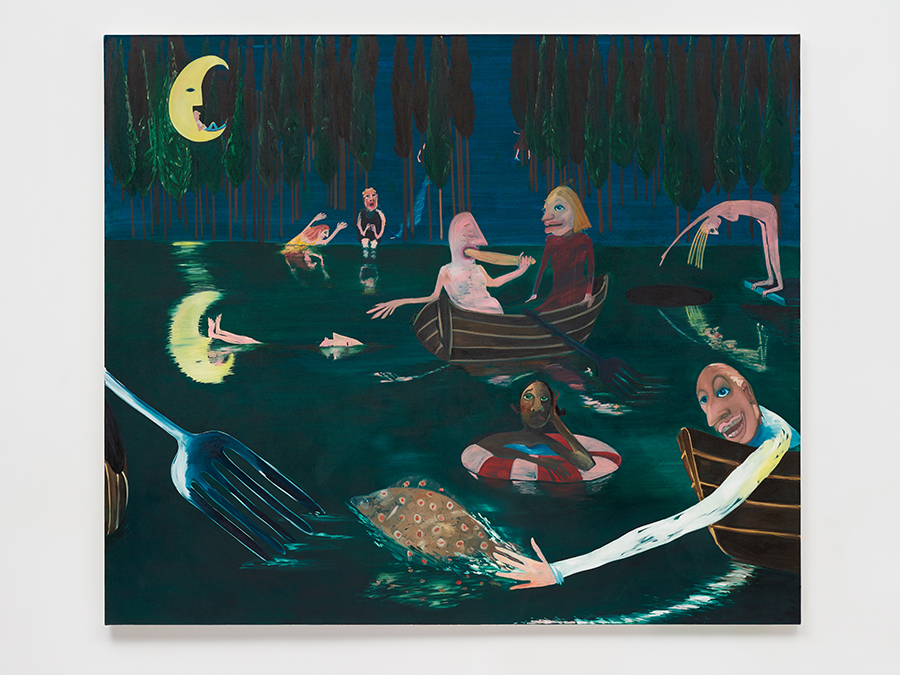
Mary Stephenson, 'The Lake', 2019, oil on canvas, 200 x 180cm.
Close Crop
The recent works I have seen move away from the complex narrative action of tableaux to a focused investigation of objects and moments. Can you tell me a little about this shift? It feels as though you are zooming in on sections of wider scenes; or giving space to motifs that have already been established within your wider aesthetic world.
Over the last year the more carnivalesque and hectic populated spaces had disappeared and I naturally had to scale down (studio restrictions) and change the worlds I was exploring. I’m wanting to gain confidence in the more drawn back and smaller works. However, I think the large and small works are both needed in my practice, they inform one another, for sure.
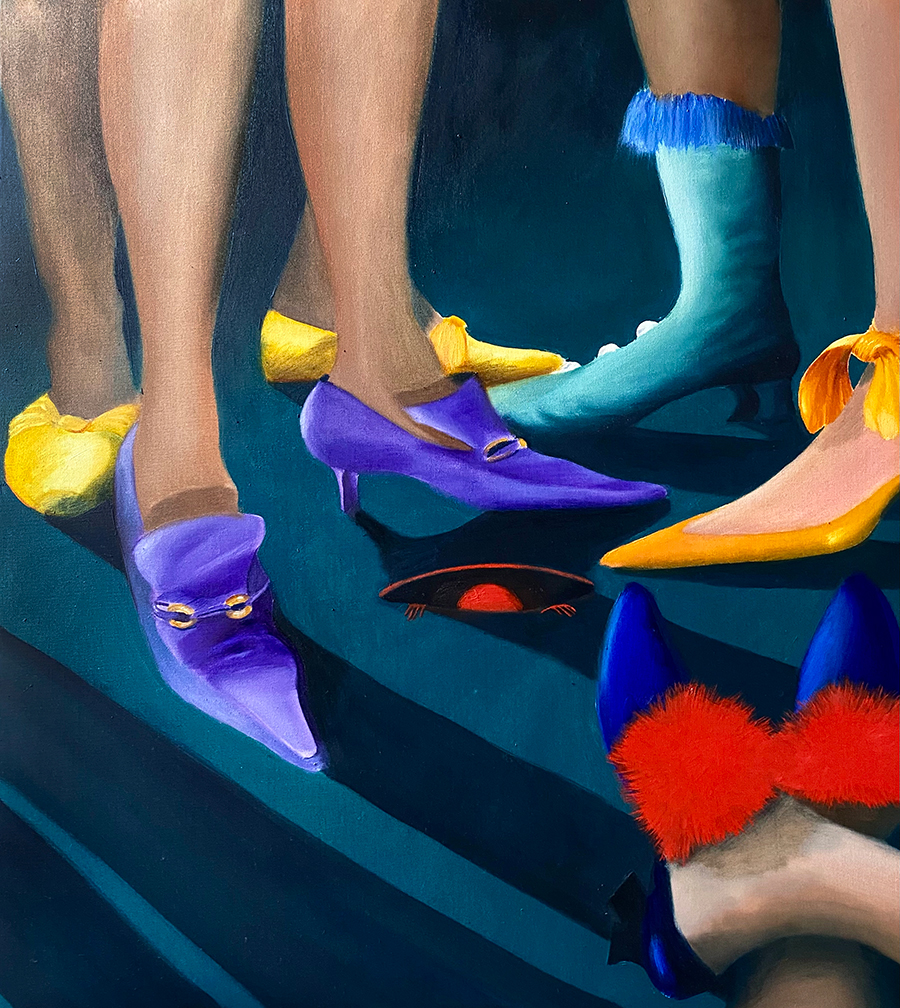
Mary Stephenson, 'Shoes', 2021, oil on canvas, 45 x 50 cm.
Future
What are you currently working on or thinking about?
I’m thinking about all those old social spaces from before covid and how they might look in the near future. I’m wondering how these new and unfamiliar playgrounds and spaces will appear in my work and how I can navigate them.
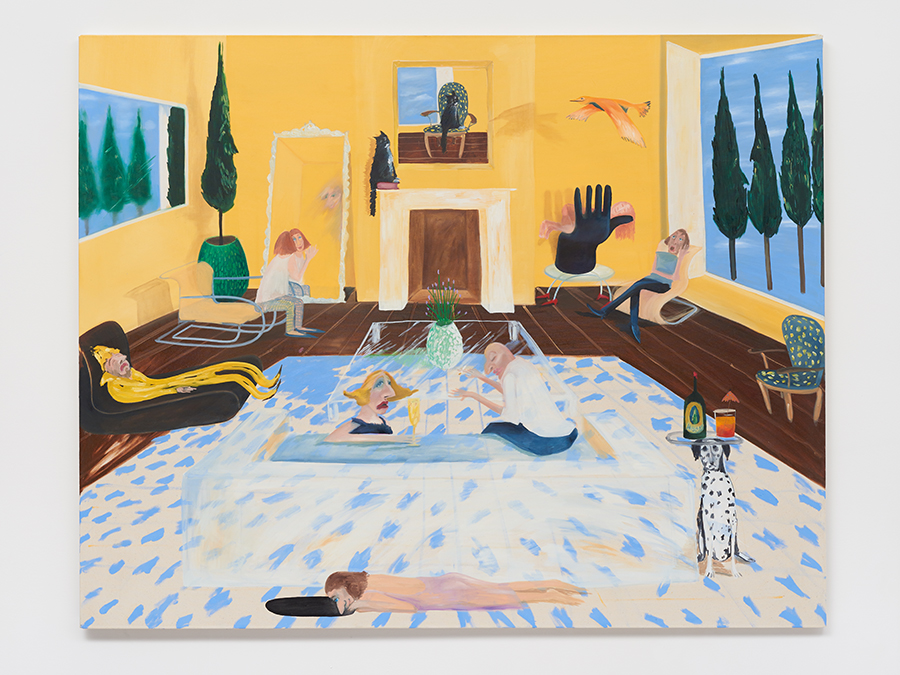
Mary Stephenson, 'The Party', 2019, oil on canvas, 150 x 120 cm.
Friends
Finally, which artists do you look to and appreciate from history and our present moment?
Dorothea Tanning, Pedro Almodóvar, Stanley Spencer, Paula Rego, Brook Hsu, Josephine Rowntree, Lisa Ivory and my twin sister Anna Stephenson.
